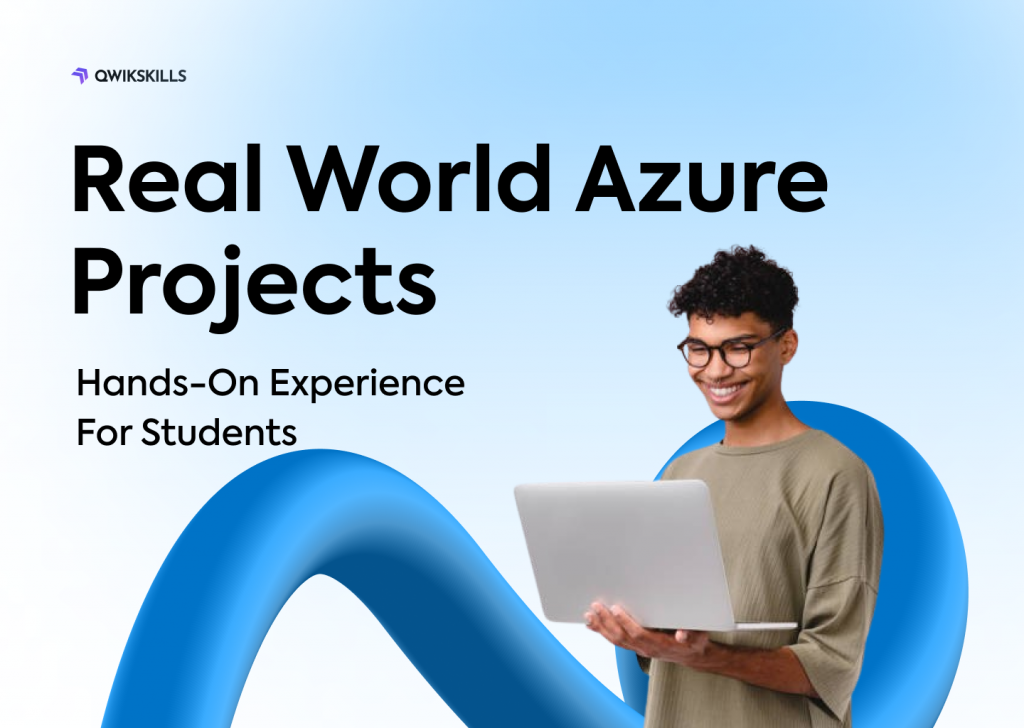When it comes to securing a Microsoft Azure cloud computing job, one big obstacle in the path of the aspirants is – the interview. To make you better prepared for the interview process, we have compiled a list of the most frequently asked Microsoft Azure Interview Questions for you.
These 25 questions are prepared after consulting some industry-renowned Azure experts and will help you clear your interview. Let’s get started.
1. What is Cloud Computing?
Cloud computing is a service used for storing and accessing data over the internet. It allows the users to access the data from a remote server rather than store all their data on physical disks such as the hard disk of a personal computer.
2. What is Microsoft Azure?
Microsoft Azure, or simply Azure, is a cloud computing platform launched by Microsoft in Feb 2010. It is a highly advanced and flexible cloud service that provides service development, data storage, service hosting, and service management facilities.
3. What are some important applications of Microsoft Azure?
Some of the important applications of MS Azure are Infrastructure Services, Mobile Apps, Web Applications, Cloud Services, Storage, Media Services, etc.
4. What is Microsoft Azure as PaaS?
Azure is a Platform as a Service (PaaS type of cloud computing service developed by Microsoft. In these types of services, all the hardware and software are offered by a third party or simply, the platform is the actual service provided to the user.
As a PaaS, Azure incorporates an operating system, programming language execution environment, database, and web services for the users.
5. What is Azure Databricks?
Databricks is a Data Analytics platform that is available with MS Azure. The purpose of the platform is to provide the data developers with the required tools and infrastructure to advance data analytics. For this purpose, it two main applications i.e., Azure Databricks SQL Analytics and Azure Databricks Workspace.
Azure Databricks’s objective is to integrate several services such as security, compute, analytics, and storage earlier offered by individual cloud providers. This way, it helps in creating an alliance of data and AI workloads.
6. What is Azure Diagnostics?
Azure Diagnostics is an API (Application Programming Interface) used to collect diagnostic data from applications operating in Azure. If you want to collect diagnostics data from multiple instances at once, you first have to enable Azure Diagnostics for cloud service roles.
7. What is Azure Service Fabric?
Azure Service Fabric is a shared platform designed by Microsoft. It aims to help the development, deployment, and management of highly scalable and customizable applications.
8. What is Azure Data Lake?
Azure Data Lake is a cloud platform that carries big data analytics. It features unlimited data storage capacity for structured, semi-structured, or unstructured data of all types and sizes.
9. Explain the crucial benefits of a Traffic Manager.
The traffic manager helps the users in improving overall performance while providing the fastest updates or maintenance. Plus, it allows instant configuration on Windows Azure Portal.
10. What is Azure Data Factory?
Azure Data Factory is Azure’s cloud ETL service for serverless and cloud-based data integration and data transformation. It offers a code-free UI for intuitive authoring, prompt monitoring, and administration. In addition, the service aims to formulate data-driven workflows for the preparation and execution of data movements.
11. What is the use of Azure Active Directory?
Azure Active Directory (Azure AD) is an identity management and multi-factor authentication service offered by Azure. It allows you to grant your employees access to specific products and services within the network and protect the users from cyberattacks.
12. What are the different cloud deployment models?
Cloud deployment models are a type of virtual computing environment that authorize you to decide how much data is to be shared and decide who gets access to the whole system.
There are usually four types of deployment models, i.e., –
Public cloud: As the name suggests, it is accessible by the public and enables cloud services across the public internet and server. This model is excellent for organizations with growing and fluctuating demands and companies with low-security concerns.
Private cloud: Here, the cloud computing services are offered either over the private internal network or the internet platform available to the selected users. A private cloud model is integrated with a company’s data center and managed by its IT team. It is beneficial for companies looking for cost efficiency and wanting more control over their data and resources.
Hybrid cloud: It is a combination of two or more cloud architectures, and within this cloud system, the internal or external providers can offer resources.
Community Cloud: It is similar to the public cloud with only one difference, i.e., it allows access to a limited set of users who share similar goals and use cases.
13. Name three types of Disks used by VMs.
- Operating system disk
- Temporary disk
- Data disk
14. What is a Fault Domain?
A fault domain is a group of hardware that share a common power source, or basically, a single point of failure. Each fault domain consists of some racks and virtual machines that are distributed across the Azure platform.
15. What is Enterprise Warehousing?
Enterprise warehousing is a scenario in which data is generated by an organization that has access at a single point within the globe. It allows linking the serving to a single position with the support of periodic handling.
16. What are the types of services you can build with the Service Fabric?
With Azure Service Fabric, you can build two types of services –
- Stateless Services: In these services, no state is saved, and the longer-term state is stored in some external database. This is the most common application/data layer approach to building services.
- Stateful Services: As the name suggests, the state is stored in this type of service. The main benefit of this service is that it eliminates the need for an external database.
17. What are the differences between a Subscription Administrator and a Directory Administrator?
When you sign up for Azure, you are assigned the role of a Subscription Administrator by default. As a Subscription Admin, you can use a personal Microsoft account or a work or institution’s account to manage all the services in the Azure Portal. Plus, you can add others as co-admins if the job requires them to sign in and access services.
Azure Directory Administrator, on the other hand, has to manage the directory and identity-related features. Therefore, if you are an Azure DA, you will have access to several features in the Azure portal, and your responsibilities and tasks will depend on your role. For example, you might have to create or edit users, assign roles to others, reset passwords, and maintain user licenses and domains.
18. What are the services used to manage resources in Azure?
- Application Insights
- Azure Portal
- Azure Resource manager
- Log Analytics
19. Explain some of the drawbacks of using Microsoft Azure.
- The first major drawback of Azure is that it does not allow cloud computing if you are not able to connect to the Internet.
- Secondly, it is a web-based application and needs a lot of bandwidth to download large documents.
- And lastly, web-based applications are sometimes slower as compared with a similar software program on the computer.
20. What is the main difference between the repository and the powerhouse server?
The primary difference between repository and powerhouse servers is that while the repository servers manage the integrity, consistency, and uniformity, the powerhouse servers handle the integration of numerous aspects of the database repository.
21. Name the three main components of the Windows Azure platform?
Here are the three main components of Azure –
- Compute
- Storage
- AppFabric
22. What is a VNet?
VNet is a representation of one’s own network in the cloud. Therefore, the primary responsibility of VNEt is to isolate your instances launched in the cloud from other resources.
It is used to enable multiple types of Azure resources, such as Azure Virtual Machines (VM), to enable secure communication.
23. Explain the concept of the table in Azure.
A table in Azure is a cloud-based NoSQL datastore that allows you to store large amounts of structured and non-relational data.
Azure Table features a schemaless design where you can store a collection of entities in one table. Plus, every entity contains a set of properties, and each property represents a name-value pair.
24. What is Blob?
BLOB stands for Binary Large Object, and it is a file of any type and size. These files are addressable using the following URL format.
There are two types of BLOBs in the Azure Blob Storage, i.e., Block Blob and Page Blob.
25. What is Windows Azure compute emulator?
Azure Storage Emulator is a tool that you can use for building and testing your app before deploying it to Azure without creating an Azure subscription or incurring any costs. In addition, it is also used to emulate Azure Blob, Queue, and Table services for local development objectives.



